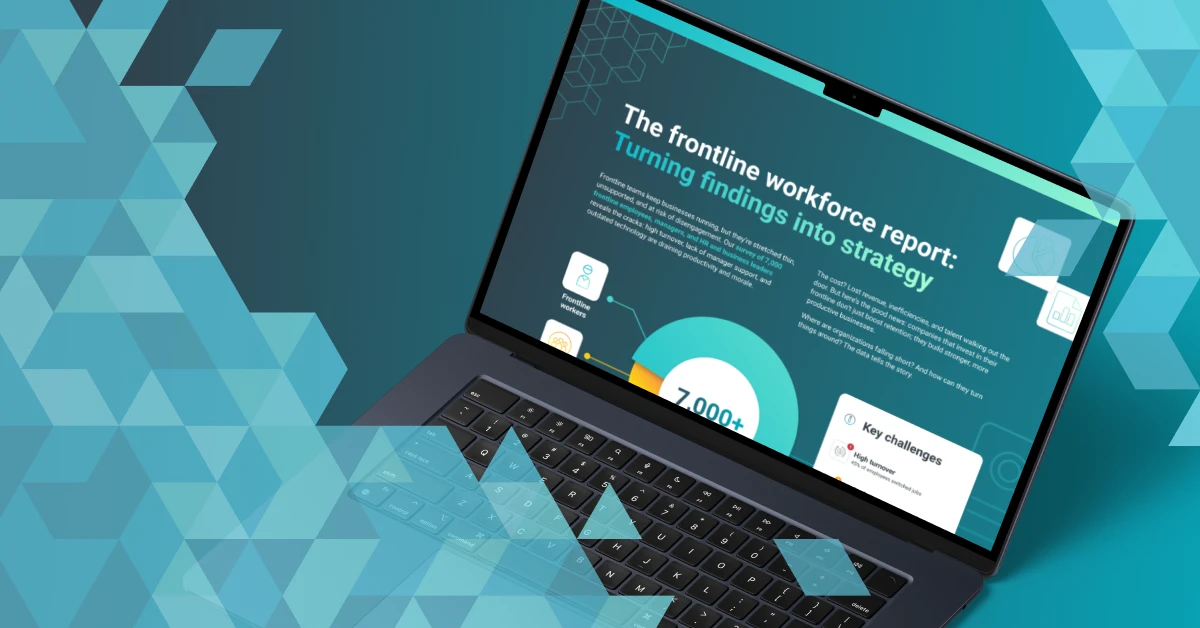The Essentials of Pandemic Business Continuity Planning: What You Need to Know

It goes without saying that we’re living through challenging times. As John Lennon prophetically sang four decades ago, “Nobody told me there’d be days like these — Strange days indeed!” In both our lives and livelihoods, the novel coronavirus and the COVID-19 disease that it causes has led to unprecedented disruption.
As a business leader, you’re inherently resourceful and already have a game plan to help your organization get through this historic moment. If you have a pandemic business continuity plan in your tool kit, you will fare even better.
What is Pandemic Planning for Business?
Simply put, pandemic business plans are the combination of strategy and tactics used to help your business withstand a crisis and eventually restore its normal operations.
In other words, they are:
“The planning and preparation that takes place to ensure that an organization will be capable of operating its business functions during emergency events such as natural disasters, a business crisis, or influenza season.”
– Shagun Chauhan, a business consultant at India-based iFour Technolab
Now, unfortunately, we can add “pandemic” to Chauhan’s list of examples.
Even though a pandemic has already arrived — all hope is not lost. In fact, it’s right here and begins with framing what your organization’s unique pandemic flu business plan will look like.
Let’s start with this basic question:
Why Do You Need a Pandemic Plan for Business Continuity?
Whenever a crisis occurs that may disrupt your operations or derail your company’s momentum, losses can be incurred. To mitigate costly contingencies and preserve profits, protect your organization by anticipating issues as far in advance as possible.
For many, the need to implement a pandemic flu business continuity plan has already arrived. That doesn’t mean it’s “game over” though. However, in many cases, it will change the nature of how certain strategies are implemented.
“Don’t invest money you don’t have to continue thriving through the pandemic. The economic impact of the crisis is going to be long. It’s a marathon not a sprint, so don’t blow your resources in the first few months.”
– Laura Fuentes, operator of Infinity Dish, who advocates for contingency strategies over reactionary protocols
Indeed, the name of the game is “survival” and preferably for the long term.
“COVID-19 is one of the most complex disruptive events that businesses face due to its global rather than regional nature, elements of quarantine, absence of public transportation, the challenges of a large number of remote users, etc.
Therefore having a thorough business continuity management system is extremely important and might be the difference between the business surviving or failing during the event of a pandemic like COVID-19,” explains Rajeev Tyagi, who leads operations and service strategy for information technology company Softtek’s US and Canada markets
The 6 Essential Steps to Building Your Pandemic Business Continuity Plan
No matter how you start your pandemic business continuity planning process, taking critical steps now can help keep your enterprise moving forward during this international health crisis.
Here are six essential steps you can use.
1. Safety First: Stay Healthy
It’s the organization’s responsibility to safeguard the health and wellbeing of its employees. COVID-19 is a health crisis first and foremost — its financial impact should be a secondary concern.
“The top priority of any business continuity plan should be to ensure employee health and safety and to continue to provide exemplary service to customers. The hard work, however, first begins internally.”
– Monica Eaton-Cardone is the Co-Founder and COO of Chargebacks911, a risk mitigation firm
2. Talk to Me: Communication is Key
Emphasize clear and supportive communication throughout any and all pandemics your organization faces. Foster a culture of transparency by sharing necessary information openly and in a timely manner. This will not only make your employees better informed, but it will also help maintain morale. Also, be sure to keep a master list of both your team members and key stakeholders’ updated contact information.
“You also need to consider the way you manage and communicate between teams. For example, we’ve always facilitated company-wide Kanban Meetings at the start of every day. In light of the ongoing pandemic, we’ve begun holding virtual meetings instead to accommodate remote employees. We use these meetings to discuss and resolve any issues surrounding clients or products, and we also encourage individuals to speak up with concerns or questions,” explains Monica Eaton-Cardone.
3. Work Sweet Work: Working from Home
We used to say “Home is where the heart is.” Now, it’s where the office, the school, the restaurant, and the movie theater are, although smaller in scale.

“In the age of COVID-19, your employees should be equipped with all the necessary tools to make the transition to remote work as seamless as possible. This includes distributing laptops, if needed, and enabling Virtual Private Networks to coordinate remote access across secure devices.”
– Monica Eaton-Cardone
With remote working, also, comes the need for increased vigilance when it comes to maintaining both employee and company privacy as well as warding off security concerns. With more people working from home than ever, businesses should expect an increase in cyber-attacks and scams that target their remote workers.
“Cybercrimes have been on the rise since COVID-19. Since everything from our day-to-day shopping to our internal business and customer transactions have gone fully online, our employees are no longer protected within their company network environment,” explains Art Katch, CEO, and founder of Alternis IT, a San Jose-based firm with a specialty in cybersecurity.
Most home networks are unsecured, Katch points out, so increased vigilance is needed on the part of remote workers. Ludovic Rembert, a security analyst and founder of Privacy Canada concurs and reminds that maintaining employee’s privacy should likewise be a priority.
“Protecting privacy and providing reliable and trusted security for a property or online presence (business or individual) should always be prioritized to ensure that personal information and data is not leaked and cannot be accessed by anyone who should not see it,”
– Ludovic Rembert
4. Decisions, Decisions: Empowering Others
You can’t make every decision — especially during a health crisis — so learn to delegate some key decision-making needs to trusted team leaders and employees. Empower them to make critical decisions as necessary.

“When your employees are confident in their role and responsibilities, they will be encouraged to exhibit the same measure of confidence and care to customers,” says Eaton-Cardone, who encourages inspiring a sense of security among your employees as much as possible.
To that end, make sure that designated employees have both permission and access to acquire emergency funds if necessary. Keep a list of your organization’s financial institutions and credit cards, and be sure to authorize key personnel to use them as needed.
5. Stash the Cash: Cutting Costs
Among the many problems that might arise during the pandemic is managing cash flow. Softtek’s Rajeev Tyagi suggests making dramatic cuts to your operational costs to inject cash into your business. Tyagi also suggests keeping an eye on oscillating demand with supply chain disruptions. Finally, Tyagi recommends scaling operations quickly when everyone is working remotely and use this opportunity to “drive a new future that is resilient.”
Similarly, Infinity Dish’s Laura Fuentes reminds us that there is often power in a smart pivot. Look for opportunities to rethink how your business operates by analyzing your current processes. As an example, she suggests first considering the state of your company’s sales funnel.
“Identify where in the sales process you will be hit, and move your efforts away from there to another element that can still thrive in the pandemic environment. For example, if you’re an in-store retailer who can’t make sales because your state is in lockdown, then try to increase your awareness and interest online. Increase your marketing game and, even if you don’t make sales online, you’ll have a host of new consumers eager to buy from you when you get back.”
– Laura Fuentes, Infinity Dish
Fuentes’ own company has seen a spike in interest in their home entertainment offerings due to communities quarantining in their places of residence. Prospective customers, however, are sometimes concerned that technicians will not be able to install equipment, so Fuentes’ team decided to spotlight this issue.
“We’ve decided to focus on ensuring customers and staff that our model is still actionable and they can make purchases knowing they’ll be fulfilled in a timely manner,” says Fuentes, who reminds that business is dynamic — perhaps now more than ever. “If your sales have spiked, reduce your marketing budget, and focus on fulfillment. If your sales have dropped, decrease your stock purchases and push your promotional campaigns,” she adds.
6. Stay Relevant: Engage Your Community
As Natalya Bucuy, digital marketing manager of LiveHelpNow and HelpSquad says, “We believe business continuity is important and business owners must stay present and relevant, even if they are forced to close during the COVID-19 quarantine.” Bucuy advises maintaining relevance and not “disappearing into despair” is especially important during a pandemic.

While practicing social distancing, Bucuy has witnessed many individuals and small businesses double-down on their online presence to remain connected and relevant to the customer bases.
From fitness instructors streaming live workouts and cooking schools offering donation-based classes to yoga studios offering live, guided meditation sessions. Staying connected virtually is a sound way to remain relevant to your core audience base.
Fuentes concurs with this, “Do reassure your audience that you’re still open for business and update them on any changes to protocols.”
The Key to Pandemic Preparedness for Business: Giving Back
Showing your customers, advocates, prospects, and employees that your organization is committed to the greater good is possibly one of the most important elements of a pandemic flu business plan.
“Even if these endeavors do not bring a business profit, they serve the communities near and far. For the world in crisis, that’s huge,” Bucuy recently blogged. “Activities like these remind people that they are not alone. They give them a sense of togetherness and belonging. It gives them hope. Giving people hope is always good business.”
– Natalya Bucuy, digital marketing manager of LiveHelpNow and HelpSquad
If nothing else, doing what’s right is usually also just good business. Give people something to look forward to on the other side, and they’ll be more likely to remember your brand once business is back to normal.
Download our business recovery roadmap to learn more about how to restore business continuity after a pandemic.

About the author
Beekeeper
Interested in learning more?
Join 1200+ companies transforming frontline work with Beekeeper. Start your journey today to make every task easier, every team stronger, and every shift smoother.






